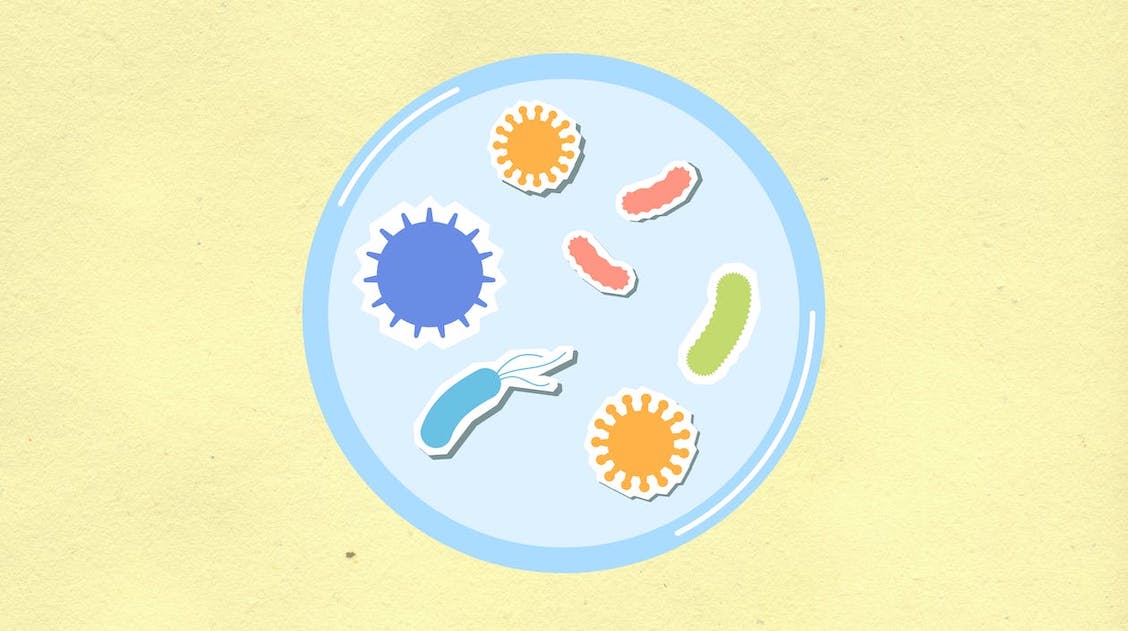
Gut Microbiota
The idea of “gut microbiota” is something that feels like a newer concept. We never really learned about that when I was a kid growing up.
We did learn about the importance of eating the right food, limiting sugar (though this was more about protecting your teeth than it was about your stomach), and there was a food pyramid. Growing up in the 1980s was a very different time, especially in the context of awareness of food and how our bodies react to those foods. Until recently, I think that I had a pretty basic understanding of what the gut was and how it works. I understood (loosely) that food goes in, waste goes out, and that something sort of happened in the middle.
Digestion was the thing you needed to wait thirty minutes for before going for a swim. Now, it’s increasingly becoming common knowledge that good digestion and a healthy gut are central to health. And gut microbiota may be a key player.
What is gut microbiota?
Gut microbiota (sometimes also referred to as gut flora) is all the different microorganisms that live in mammalian digestive tracts. There are many different kinds, including bacteria, archaea (a group of single-celled organisms), viruses, and fungi. The gut, or the gastrointestinal tract, is where most of these microorganisms are found, but depending on where you are in the tract, the type and concentration can vary significantly. For example, the colon has somewhere between 300 and 1000 different species of bacteria!
Even though there are so many different types of bacteria, the vast majority of them come from a handful of about 30 or 40 species.
We have developed this relationship with our microorganisms over millions of years. But it is only recently that we’ve started to understand just how important these varied microorganisms actually are for our health.
How does sugar affect gut microbiota?
As noted in an article written on the topic, the microbiota has a number of functions. Our own Jack McKenna notes that gut microbiota is involved in:
- Harvesting energy from digested food and breaking down complex molecules in meats and vegetables.
- Protecting the body against pathogens.
- Regulating immune function (an estimated 70% of the immune system resides in the gut).
- Strengthening the biochemical barriers of the gut and intestine.
Sugar can cause an unbalanced ratio of different microorganisms in the gut. If there is too much sugar, more Proteobacteria are produced to handle it. This happens, however, at the expense of other microorganisms that break down things like complex carbohydrates. Like any ecosystem, the gut works better with a balanced system.
In addition to this, there is also research that discusses how the lining of the intestine can be affected by sugar. As the number of bacteria feeding on dietary sugars increases, erosion of the intestinal walls is triggered. This can lead to a defensive immune response and a number of negative effects.
The gut affects your body
What has become evident in recent years is that the state of the gut affects the whole body in many meaningful ways. For example, the gut–brain axis (the system that communicates between the brain and the gut) may allow the brain to influence the gut, and vice versa. In a sense, the idea of a “gut feeling” might not be that strange, as there are 500 million neurons in your gut that connect to your brain though the nervous system.
For example, when we eat, our gut microbes produce short-chain fatty acids which then allow our brains to know we’re full.
Does the gut connect to the eyes?
Recent studies have shown a possible association between gut microbiota and eye health. Some of these issues are minor, but others are more notable. Examples include glaucoma, dry eye, and age-related macular degeneration.
A recent study points to how the Human Microbiome Project showed “the presence of different microbial species (bacteria, viruses, fungi, and archaea) in five distinct districts of the body, including the gastrointestinal and the urogenital tracts, the skin, and the oral and nasal mucosa, with central roles in health and disease.” But the work delves deeper into how the eye, which is a “closed” (in that it is largely insulated from the rest of the body) organic system, can be affected by bacteria in both positive and negative ways.
The authors, importantly, note:
“Even though the ocular surface is directly exposed to the same external environment, evidence supports the existence of a unique OSM compared to those related of the facial skin and oral mucosa. Nevertheless, the presence of a stable “core ocular surface microbiota” has been extensively debated and is still under discussion.”
More research into the connection between the gut and eyes is ongoing and needed.
What other research exists?
Gut flora is something that is attracting more interest in the public sphere, with everything from kombucha to probiotic yogurt gaining larger segments of market share. It is only natural that, with such a hot topic, research will continue to grow. We’ll be updating this article as more and more research on the subject is made available.










